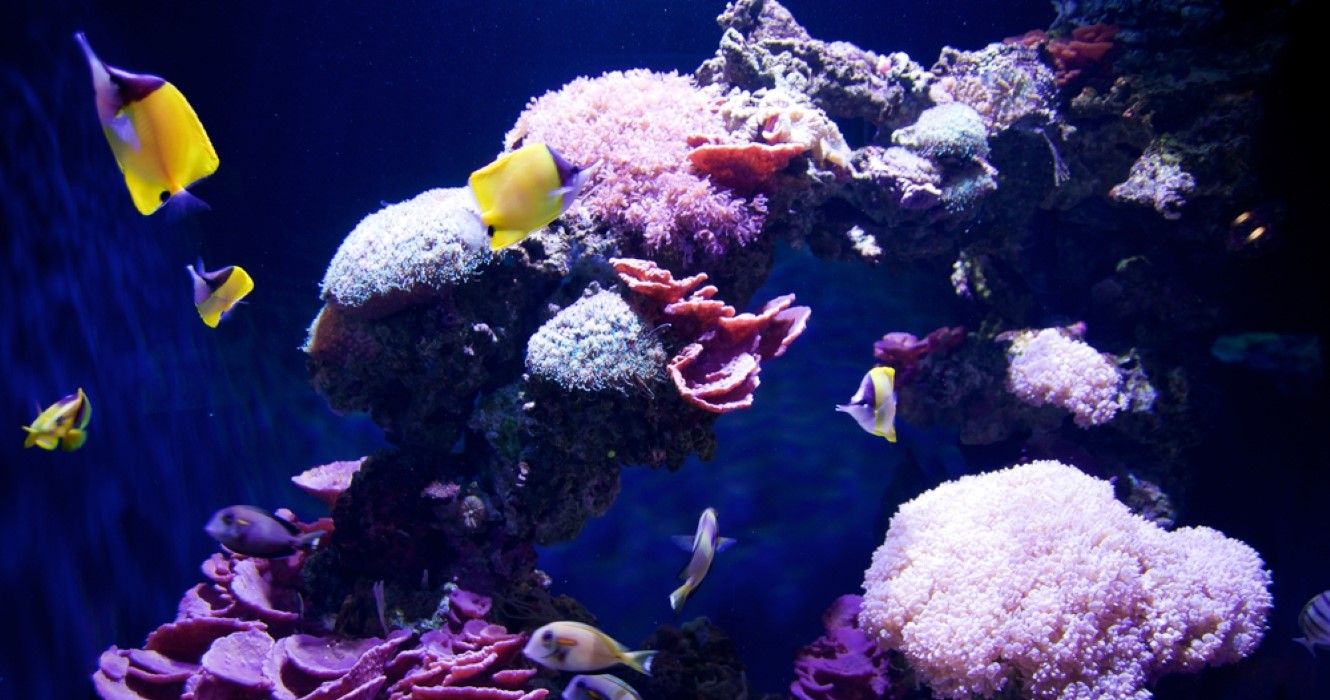Quick Links
Imagine coming face to face with a giant Pacific octopus that weighs 100 pounds and measures 16 feet across. That's with a glass partition in between, of course, but it's still an astonishing sight and one of many that can be experienced at the Seattle Aquarium.
Home to 12,000 mammals, birds, fish, and invertebrates, the nonprofit museum has six major exhibits: Window on Washington Waters, Life on the Edge, Pacific Coral Reef, Birds & Shores, the Underwater Dome, and Marine Mammals. Considered one of the best aquariums on the West Coast, the Seattle Aquarium is situated on the shores of Puget Sound, itself known as a haven for whales and other marine life.
Along with viewing the animal exhibits, visitors to the aquarium can take advantage of daily events such as feeding times for otters and seals and informative talks by aquarium guides. Talks related to the All About Our Washington Waters exhibit are held five times a day, for example, while the harbor seal habitat is explained every day at 10:45 a.m. Visitors can watch marine mammal feedings at 11:30 a.m. and sea otter feedings at 4:45 p.m.
Visitors Can View Seals, Otters, And A Giant Octopus
The giant Pacific octopus visitors see through the glass can change color at will, depending on its mood and what it intends to do next. It's a nocturnal hunter that loves to eat clams, squid, and fish and uses its 200 suckers to grab and hold onto its prey. The giant octopus can squeeze through small spaces, even when fully grown. As long as its beak can fit through a small space, the rest of its body will follow. In fact, according to the museum, an adult giant Pacific octopus can squeeze through a hole the size of a lemon.
Unlike the other-worldly giant octopus, the antics of sea otters and river otters which live at the aquarium are pure entertainment. Southern sea otters like the ones at the Seattle facility are members of the weasel family and are the smallest marine animal. They also have the thickest fur of any mammal, with up to 1 million hairs per square inch of the body. Adult female southern sea otters weigh 35 to 60 pounds, while males can weigh up to 90 pounds.
Aquarium visitors can get a good look at northern fur seals, too, which were originally known as sea bears due to their thick coats. These mammals have long ear flaps and pointed snouts, and males grow to be up to around 600 pounds and seven feet long. Females are smaller, weighing up to only about 110 pounds. Visitors to the marine mammal exhibits can watch the animals swimming or diving underwater or rest on the surface. Seating areas are provided around the mammal pools for those who want to spend some time watching them frolic around in the water.
Other Exhibits Focus On Birds And Fish
The Seattle Aquarium's Birds and Shores exhibit is an open-air experience on the shoreline of Puget Sound, and as visitors walk through, they'll likely see birds diving for fish or nesting in the small caves and ledges that mark the sound's rocky coast. Birds that thrive in this exhibit include the black oystercatcher, common murre, tufted puffin, long-billed curlew, pigeon guillemot, and rhinoceros auklet.
The Tropical Pacific exhibit showcases the marine life found on a coral reef. The aquarium's 25,000-gallon tank lets visitors see the colorful variety of fish that includes puffers, tangs, wrasses, triggerfish, giant clams, and of course, corals. As part of the exhibit, video screens describe reef life and explain the various risks to these habitats.
Visitors can get up close with marine wildlife in the tide pools that are part of the Life on the Edge exhibit. The focus is on the animals that live in tide pools on Washington's outer coast and Puget Sound's inland area, such as sea cucumbers, hermit crabs, sea stars, and sea urchins. Museum guides help visitors identify the creatures.
The aquarium also has a Family Education Center, which is focused on orcas, also called killer whales. They are part of the dolphin family and are found in the waters of the Pacific Northwest.
The activity center features videos that explain the environmental protections the orcas need, such as reducing ship noise that can affect their behavior. It also has a listening station that uses underwater microphones in the waters around Puget Sound. Visitors can listen in real-time to any orca sounds the station is picking up.
Seattle Aquarium Uses Plan-Ahead Pricing, Timed Admissions
The aquarium, which is located on Pier 59 in the central waterfront area of Seattle, is open daily from 9:30 AM to 6 PM. Its plan-ahead pricing system is designed to enable visitors to get the best deal on admission tickets. According to the aquarium, each day's entry rate is based on attendance patterns and other factors.
Weekday entry fees are typically lower than weekend rates, for instance. On the aquarium website, visitors can look at prices for each day. A recent check of the booking site showed weekday adult entry at about $25, while Saturday and Sunday fees were around $32. Each visitor's timed ticket shows an arrival window, but once the visitor has entered, there's no time limit on how long he or she can stay.

